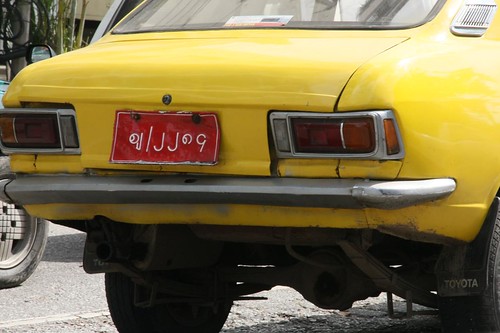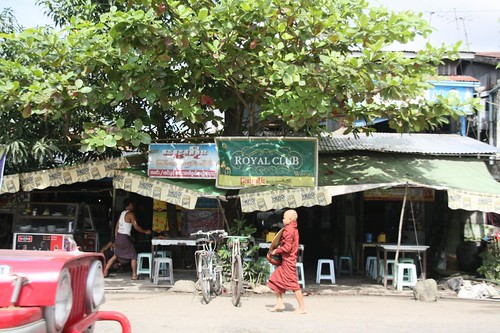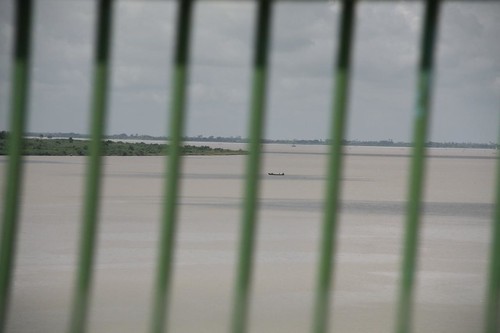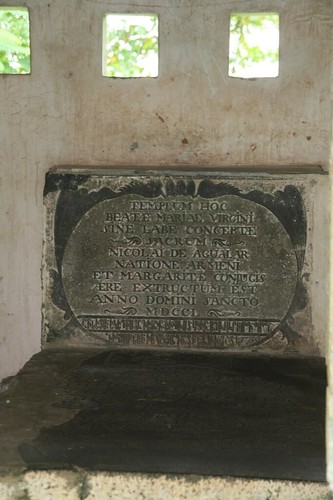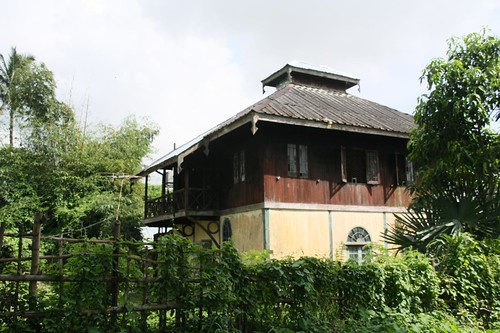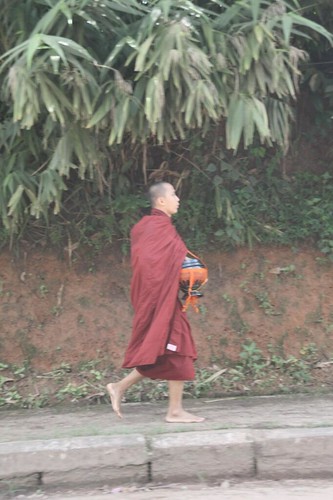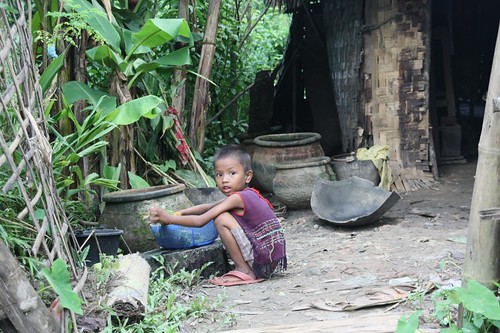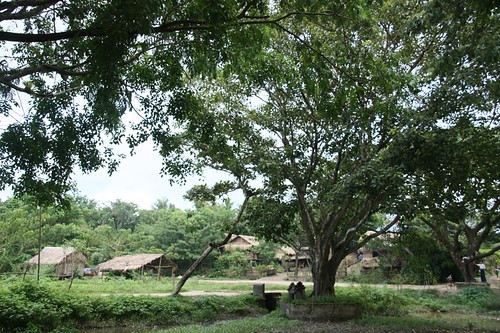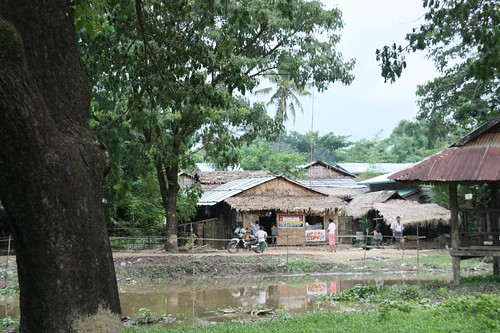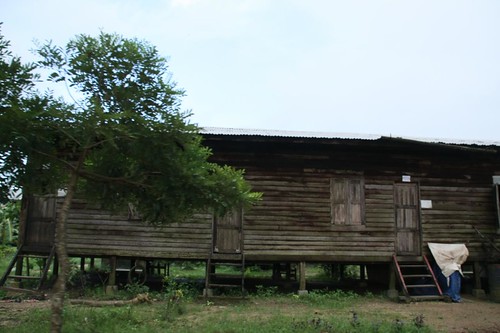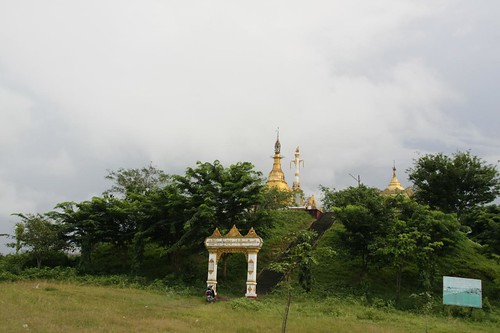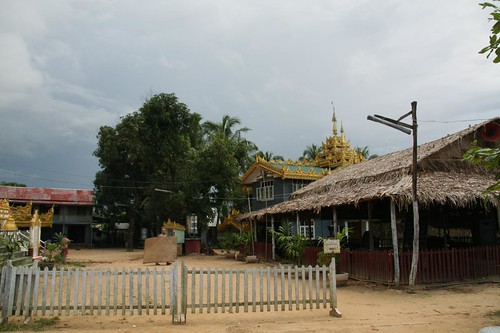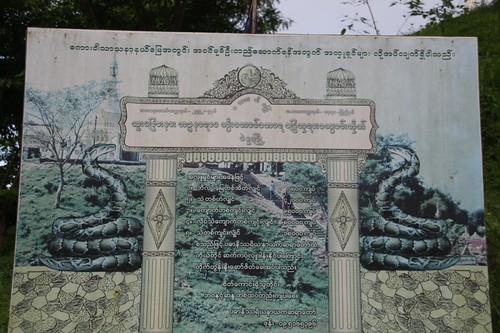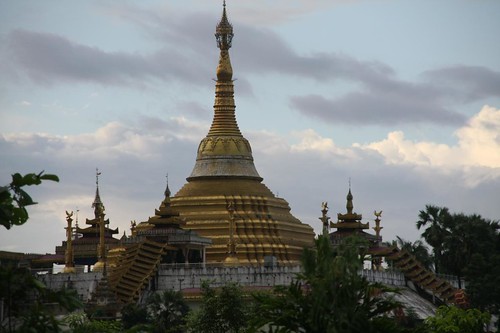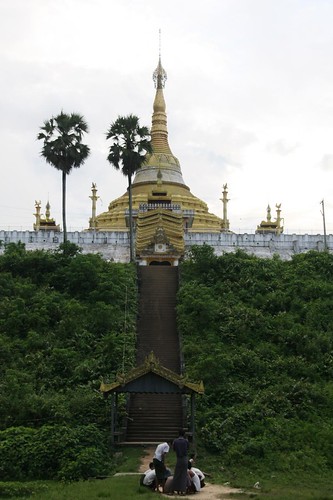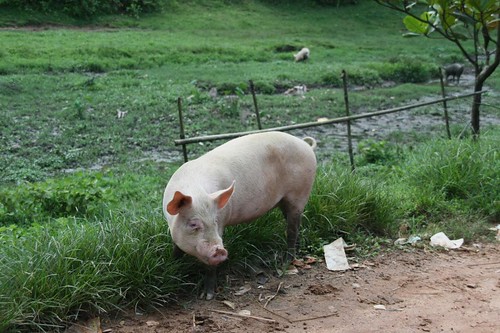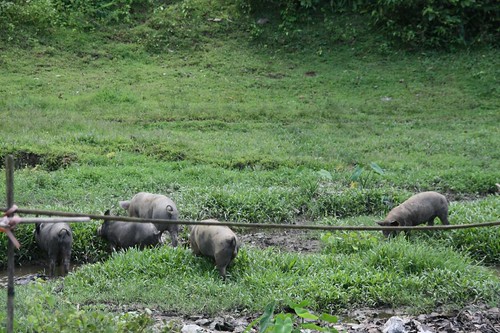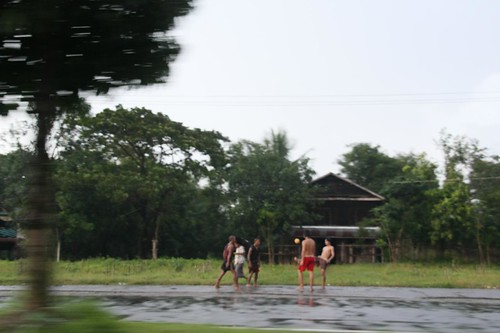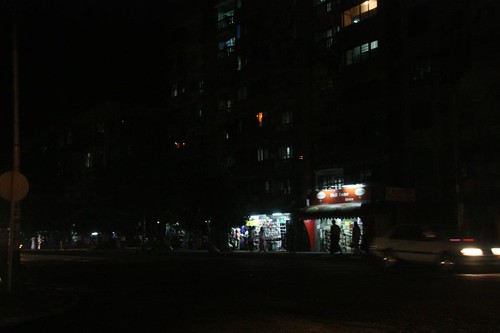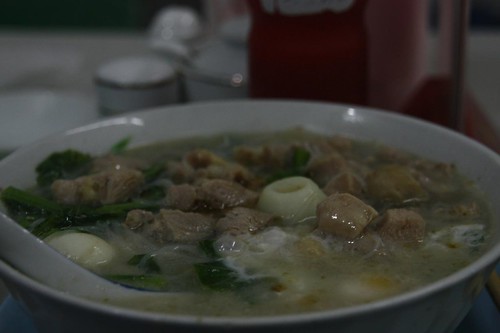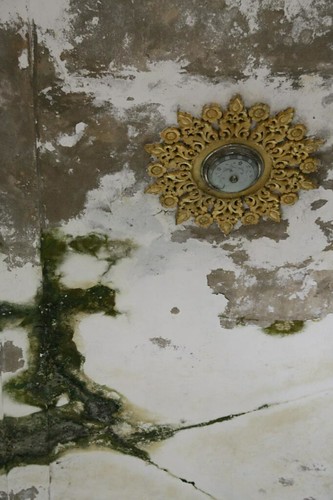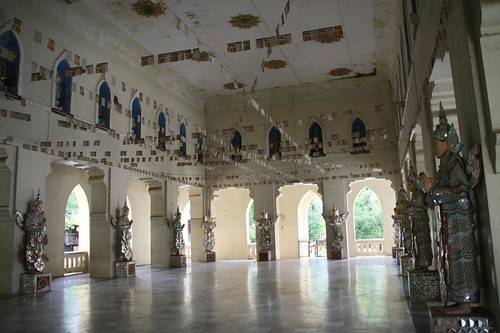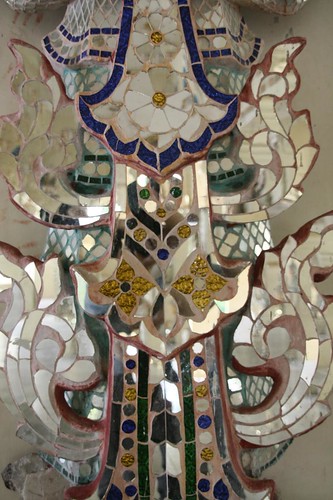We were driven to the main town area in Pegu for lunch where we had it at Kyaw Swa Restaurant. The pavement where the restaurant is located is narrow but busy. People were channeling along with places to go. There was a crowd around the kun-ya (areca nut and betel leaf) stall where a merchant would wrap the nuts with the leaf which goes with some whitish stuff. Betel chewing is a common practice in Yangon. You can usually see the reddish spit stains on the floor everywhere.
We were glad to be having lunch as we were also taking the opportunity to rest as we've been tirelessly moving from one place to another. I often wondered if Min-U, our driver, was resting and taking lunch too. Not once throughout our time in Yangon had we seen him take his meals. How he had managed to do this so secretly is a mystery to me. He was always there with a smile, ready to bring us to the next destination, driving us around for hours that could stretch up to 10 hours or more. His patience is another great mystery for he never rush us, not a single instance.
When we entered the restaurant, the lights and fans were just switched on. It seemed as though they have just opened for us. There were no other customers but the two of us. The staff members are friendly and the soup noodles are good! I had chicken noodle soup and thoroughly enjoyed it. The can of coke tasted so delicious on a hot day. We were enjoying the coolness in the restaurant and had the opportunity to see how the food supplies were delivered to the restaurant. A pickup truck carrying fresh produce of vegetables, fruits and other food products arrived. Workers at the restaurant formed a line to carry the items into the restaurant.
We passed by a village which reminded me of my eldest aunt place which I often visited when I was little. I cannot say life in a village is comfortable but, I was definitely happy with those simplicities.
Already the magnetic power of the magnificent, faded gold Shwemawdaw Paya was calling out to us from afar. Its grandeur, though aged, was difficult to ignore. With grey clouds gathering behind it, its mystery magnified and alluring. This is like the Shwedagon of Bago. It is 46ft taller than Shwedagon. It has suffered many earthquakes in the last 600 years and at one point, was completely beaten to the ground.
On a closer look, moulds have grown on its surfaces and some weed have decided to join the company. The temple is said to have enshrined hairs of Gautama Buddha and some sacred tooth collection.
A village

Shwemawdaw Paya in the distance

A buddha statue
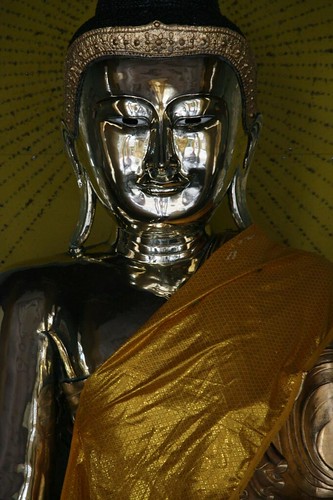
Adoration hall and pavilion
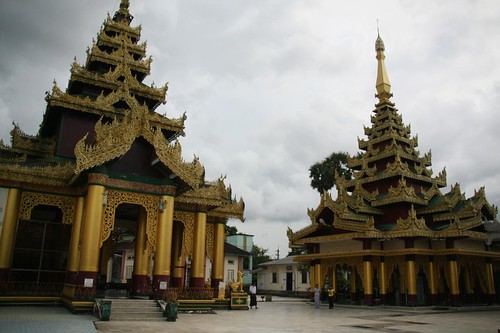
Persimmon tree
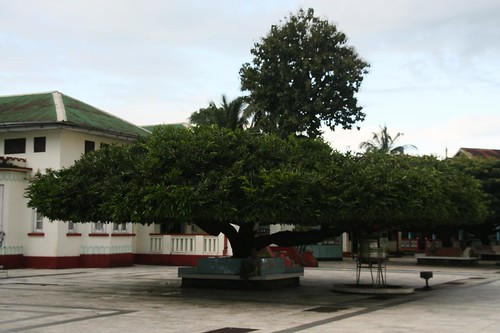
Engraved designs surrounding the stupa
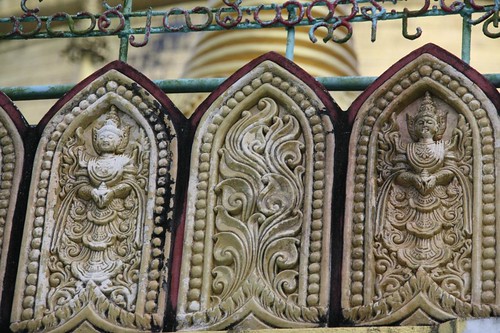
Big stupa and tiny stupas
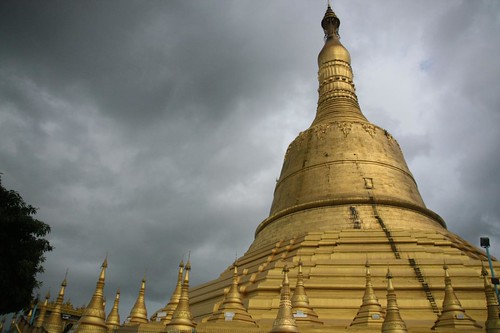
Metal staircase leading to a door to enter into the stupa

Adoration hall
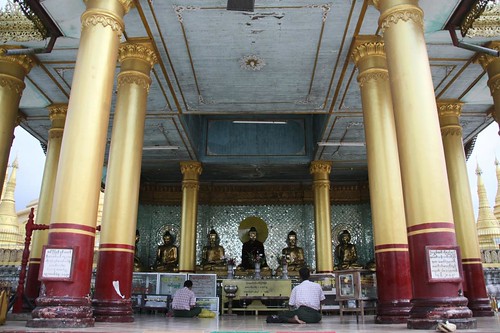
Peering at a buddha statue
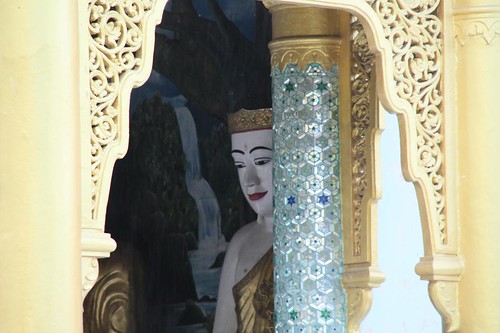
School children playing football with a persimmon while an elderly man walked down the steps of an adoration hall
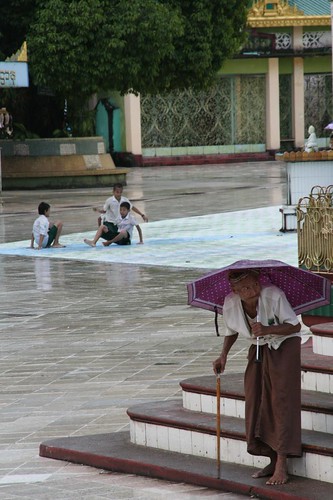
Figurine on a bell
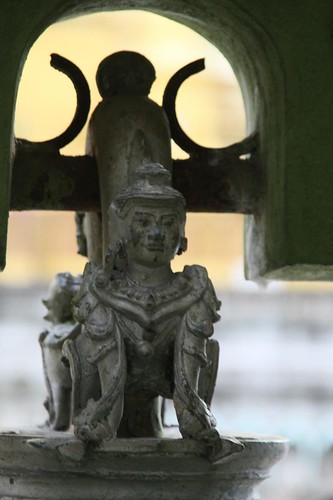
Water reflection of the stupa

A cute trashbin that looked completely out of place
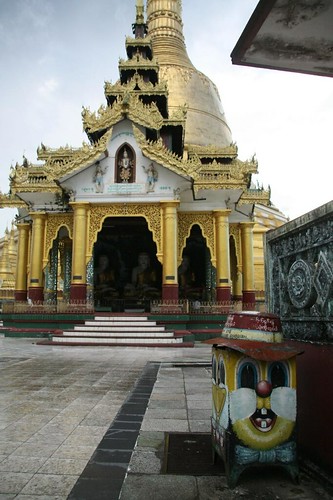
A unique looking stupa

Giant bell
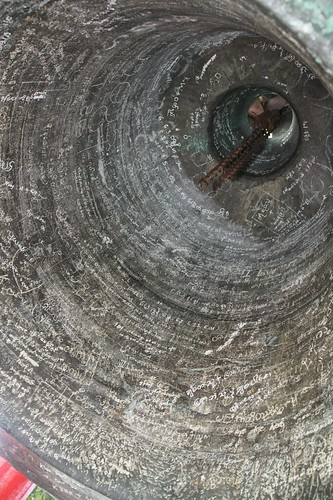
A weed growing on the stupa

